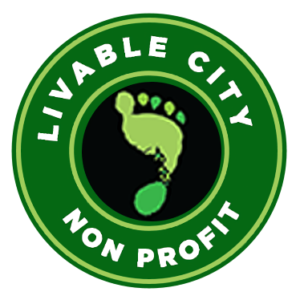
In March, the San Francisco Board of Supervisors declared a Climate Emergency, calling for “immediate and accelerated action to address the climate crisis.”
We’re urging City government to walk its talk, and join a growing number of cities making bold moves to address the climate crisis – and become more healthy, livable, equitable, and green at the same time.
As the City’s climate technical report points out, a sustainable transportation mode shift – shifting trips from automobiles to walking, cycling, and public transportation – is the most effective local climate leverage point. Emissions from private cars and light trucks are the largest source of carbon emissions in San Francisco and California. Despite progress in many areas, transportation-related emissions continue to rise, threatening to undo California’s progress towards its climate protection goals.
The City’s goal is to increase the percentage of person-trips using sustainable transportation modes – walking, cycling, and public transit – from the current 54% to 80% by 2030.
Achieving a transportation mode shift of that size in just over a decade is ambitious – and necessary. Cars are the most space-inefficient mode of transportation, so mode-shifting means less congested streets and liberates public space for community uses and greener neighborhoods. Less auto traffic makes our streets safer, and can help reduce the rising number of auto-related deaths and injuries on City streets. Reducing automobile dependence makes us healthier – reducing air and water pollution in our neighborhoods, and increasing active transportation, aka walking and cycling.
Next week San Franciscans have two opportunities to support big moves to address the climate crisis and effect a sustainable mode shift.
Better Market Street
On Tuesday October 15, the SFMTA Board of Directors will consider whether to adopt the Better Market Street plan. Better Market Street calls for improving walking, cycling, and public transit on San Francisco’s busiest walking, cycling, and transit street. The plan will remove private cars from Market between Van Ness and The Embarcadero, which will reduce travel times and increase reliabilty for hundreds of thousands of daily Muni riders. It will also extend protected bicycle lanes along most of Market to create safer cycling.
Adopting the Better Market Street Plan and certifying the environmental report will allow SFMTA to make Market Street car-free by the end of this year, and begin construction of the first phase improvements in 2020.
The SFMTA Board meeting is at 1 pm on Tuesday, October 15 in City Hall Room 400. You can contact the MTA board by phone (415.701.4505) or email (MTABoard@SFMTA.com).
Parking Reform
On Thursday October 17, the Planning Commission will consider Supervisor Mandelman’s parking reform ordinance.
Evidence compiled for the Planning Department shows that reduced off-street parking in buildings is one of the most effective strategies for shifting towards sustainable modes of transportation, reducing auto traffic and pollution, reducing the cost of housing, making our streets greener and safer for walking and biking, and meeting our climate protection goals.
Last year, the Board took a bold step of eliminating minimum parking requirements citywide. Supervisor Mandelman’s ordinance will take an important next step by updating and simplify the Planning Code’s off-street parking maximums, parking standards, and freight-loading requirements, and cleaning up, clarifying and better organizing the parking-related provisions of our Planning Code. The ordinance:
- lowers the maximum amount of parking permitted in new buildings in the City’s densest and most transit-served neighborhoods, including the Market, Mission, Valencia, and Van Ness corridors, along the City’s light rail and rapid bus corridors, and Downtown and SoMa.
- requires new above-ground parking for four or more cars to be built for easy conversion to other uses in the future.
- restricts new new driveways on Valencia Street, and new parking lots along Market Street.
- Requires accesible sidewalks and curbs on adjacent streets when new public or private parking lots are approved.
The Planning Commission hearing is at 1 pm on Thursday, October 17 in City Hall Room 400. You can find contact info for the Planning Commission on our advocacy page.




